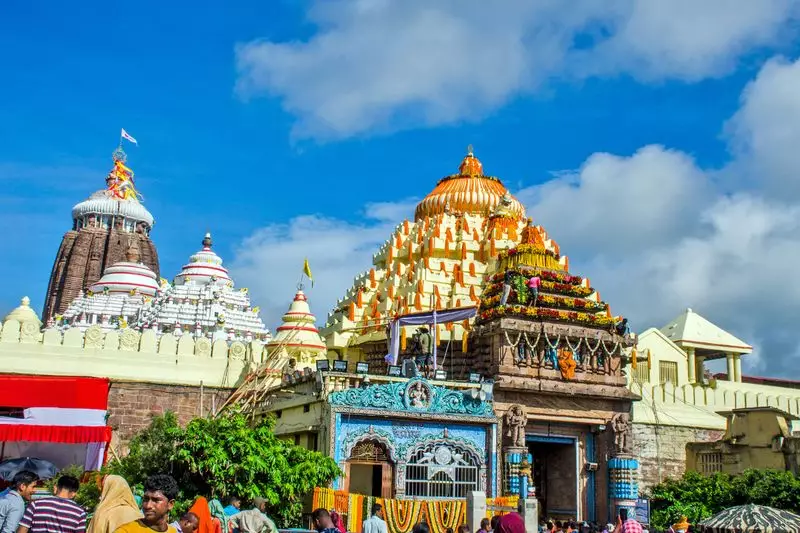
The sacred Ratna Bhandar of Puri's iconic Jagannath Temple, which has remained shrouded in mystery for decades, will finally see its complete inventory process concluded by April 2026. This monumental decision comes as the Odisha government has submitted a detailed timeline to the Supreme Court, marking a significant step toward transparency for one of India's most revered religious sites.
Historic Timeline Set for Treasure Documentation
The state government has presented a comprehensive 46-month schedule to the Supreme Court, outlining the meticulous process required to document the temple's invaluable collection. According to the submitted plan, the physical inspection and inventory creation will commence in July 2024 and continue through December 2025. The final compilation and report submission are scheduled for completion by April 2026.
This timeline represents a crucial development in the long-pending matter of documenting the temple's treasures, which haven't undergone a complete inventory since 1978. The Supreme Court bench, comprising Justice Hrishikesh Roy and Justice Sanjay Karol, has been closely monitoring the case and has directed the state to adhere strictly to the proposed schedule.
Comprehensive Preparation Phase Underway
Before the actual inventory process begins, significant preparatory work is already in motion. The state administration has allocated a six-month preparation period from January to June 2024. During this phase, several critical activities will be completed, including the formation of the inventory committee and the development of detailed methodologies for the documentation process.
The preparation phase also involves creating comprehensive standard operating procedures (SOPs) to ensure the inventory process maintains the highest standards of security and protocol. This careful planning reflects the sensitivity and importance of the task ahead, involving priceless religious artifacts and historical treasures of immense cultural significance.
Judicial Oversight and Committee Formation
The entire inventory process will be conducted under the vigilant supervision of the Odisha High Court, which has been designated as the monitoring authority by the Supreme Court. This judicial oversight ensures that the procedure maintains complete transparency and adheres to all legal and religious protocols.
A dedicated inventory committee will be constituted to execute the physical inspection and documentation. This committee will include representatives from the temple administration, archaeological experts, jewel appraisers, and government officials. Their collective expertise will ensure that every artifact is properly identified, documented, and evaluated according to established guidelines.
The Supreme Court has emphasized the need for absolute transparency throughout the process while respecting the religious sanctity of the temple and its treasures. The court's active involvement underscores the national importance of this undertaking and its commitment to resolving a matter that has lingered for decades.
Historical Context and Significance
The Ratna Bhandar, or treasure house, of the Jagannath Temple is believed to contain invaluable offerings made to the deities over centuries. These include gold ornaments, precious stones, jewelry, and other artifacts donated by devotees, kings, and historical figures throughout the temple's long history.
The last comprehensive inventory conducted in 1978 revealed the existence of numerous precious items, but since then, the complete contents have remained undocumented. The current initiative marks the first thorough inventory in 46 years, addressing long-standing concerns about the proper documentation and preservation of these cultural and religious treasures.
The temple administration, under the guidance of the Shree Jagannath Temple Administration (SJTA), has been working closely with state authorities to ensure all arrangements are in place for the smooth execution of the inventory process. This includes security measures, technical expertise, and religious protocols that must be observed during the documentation.
Future Implications and Cultural Preservation
The completion of the Ratna Bhandar inventory will have far-reaching implications for the preservation of India's cultural heritage. Not only will it provide an official record of the temple's treasures, but it will also establish a benchmark for similar documentation efforts at other historical religious sites across the country.
The detailed inventory will serve multiple purposes: ensuring proper insurance coverage, facilitating better conservation efforts, providing historical documentation for research purposes, and maintaining transparency in the management of religious endowments. Most importantly, it will help preserve the rich cultural legacy for future generations of devotees and historians.
As the April 2026 deadline approaches, all stakeholders including the temple administration, state government, judicial authorities, and the millions of Jagannath devotees worldwide await the outcome of this historic undertaking with great anticipation and reverence.





